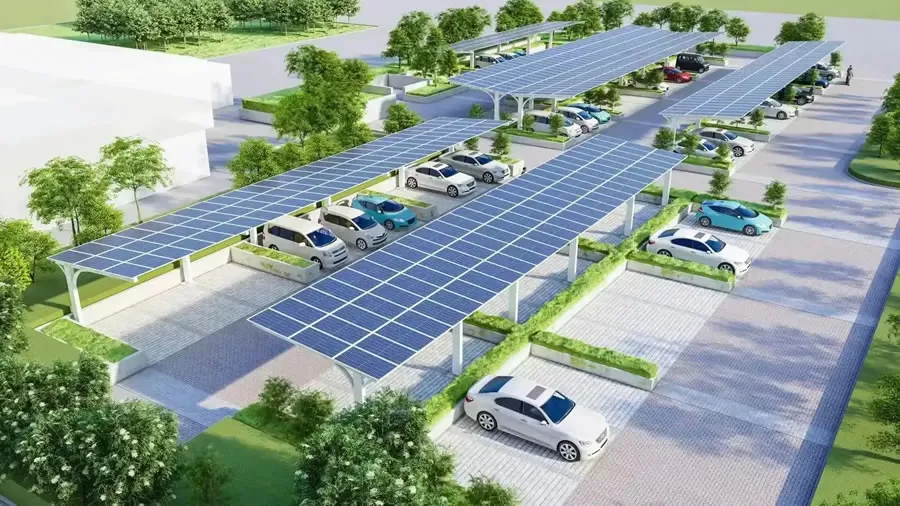
The effect of installing Tairenen photovoltaic facilities in parking lots
Solar photovoltaic application program for transportation facilities industry aims to use solar photovoltaic power generation technology to provide green energy for transportation infrastructures such as bus stations, parking lots, roads, tunnels, etc. By installing solar photovoltaic panels, it realizes self-sufficiency of power for lighting, monitoring, communication and other systems, reduces operating costs, improves transportation safety, and helps the transportation industry to achieve green and sustainable development.
I. Scenario-based Technical Solutions
1. Highway Scenario
Highway slope photovoltaic scheme: using the idle space of the slope to install lightweight components to meet the power demand of service areas and facilities along the route, such as the Taiyuan Roundabout Expressway Project in Shanxi.
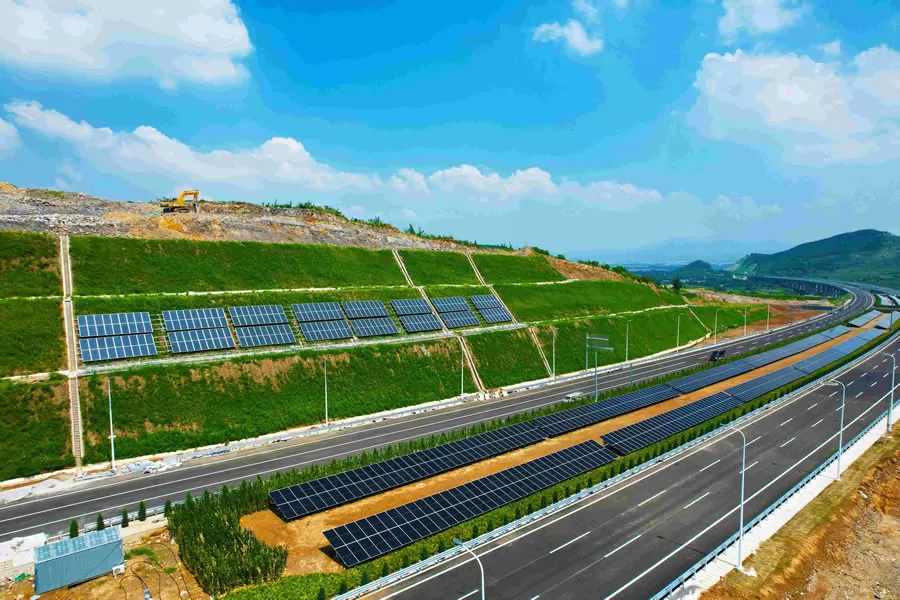
Shandong Highway Solar PV Case
Highway photovoltaic pavement: using light-transmitting concrete plus photovoltaic functional layer structure, compatible with power generation and passage function, refer to Shandong Jinan load-bearing photovoltaic pavement case.
2. Hubs and parking lots
Parking lot carport PV application: for example, Hebei Gold Standard provides modular carport design with integrated “light storage and charging” system, and the PV project in Zhoushan Port of Ningbo, Zhejiang Province, which is able to recharge 30 trolleys on average per day under normal operation.
High-speed railway station roof PV: 6MW PV roof of Xiong'an high-speed railway station in Hebei Province generates 5.8 million kWh of electricity annually, covering 50% of the station's electricity demand.
3. Service Area and Lighting
Shanghai G15 Shenhai Expressway Zhuqiao Service Area PV roof generates 200,000 kWh of electricity annually and reduces 100 tons of CO₂ emissions, as well as 739 lotus-shaped PV streetlights on S128 Chenhai Highway, realizing lighting and energy self-sufficiency.
II. Construction Management and Difficulty Breakthrough
1. Project construction challenges
Before the implementation of PV project, it is necessary to adapt the site selection and structure, and need to assess the slope, orientation and loading capacity of the berm, using lightweight flexible modules to reduce the impact of wind pressure.
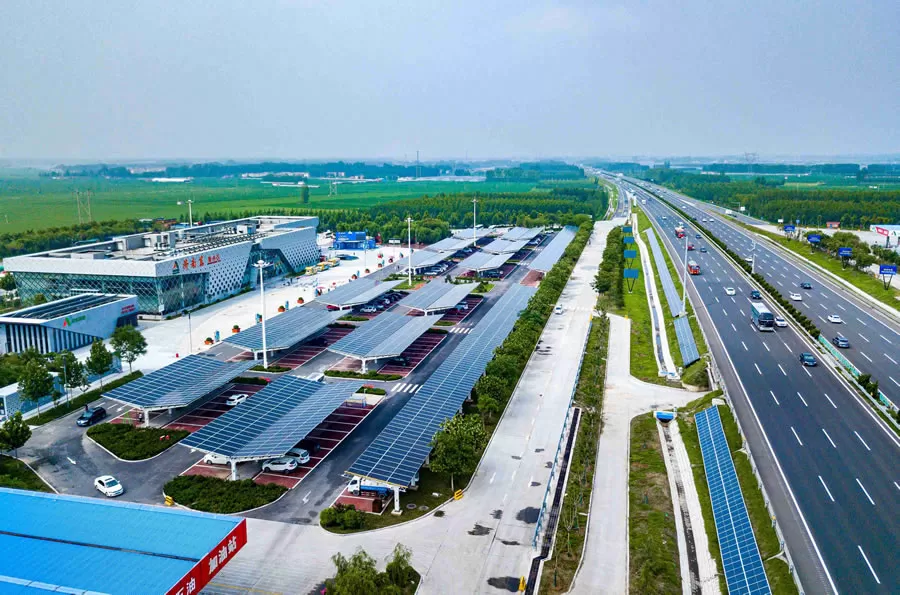
Highway service area parking lot solar photovoltaic installation case
With engineering synergy, and highway PV construction needs to be synchronized with road operation and maintenance, to avoid repeated excavation, can refer to Jiangsu Lianxu high-speed PV construction experience.
2. Standardized process
Demand assessment of photovoltaic facilities, combined with light resources and site conditions, and then select the type of photovoltaic modules, such as monocrystalline silicon/thin film, as well as the configuration of energy storage.
Project construction acceptance, need to focus on solving the related PV module fixing, as well as electrical connection and waterproof and lightning protection issues, through the third-party testing to ensure safety.
Ⅲ.Intelligent operation and maintenance and security
1. Real-time monitoring technology
Build and deploy IoT sensor networks and synchronize the collection of PV panel performance and environmental data, such as temperature and humidity. You can also choose Ankorui solution to integrate anti-islanding protection device to ensure stable operation of the grid.
2. AI Predictive Maintenance
Use big data analysis to predict equipment failures and optimize O&M decisions through AI algorithms, which can be referred to the case of Linfen smart microgrid PV in Shanxi.
Ⅳ.Business model and benefit optimization
1. Multi-revenue model
Using green power trading, the excess power can be sold on the grid, and then superimposed on government subsidies, it can realize power income, referring to the Shanghai Metro PV project, with an annual income of more than 3 million RMB.
It is also possible to reuse resources and use PV carports to combine with logistics parks and service areas to form a large-scale energy network.
2. Full-cycle cost management
Initial investment is reduced by 15%-20% through modular design, and labor cost can be reduced by 30% by using intelligent operation and maintenance.
Summarize
The program takes policy as the traction, technology as the support, operation and maintenance as the guarantee, and systematically promotes the in-depth integration of PV and transportation facilities through the whole chain design of “scene adaptation-difficulty breakthrough-intelligent management-benefit closure”.
If you have any questions about the PV case of transportation facilities, please contact us through the website page for further communication.




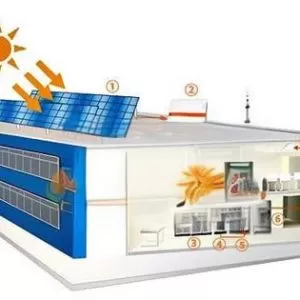
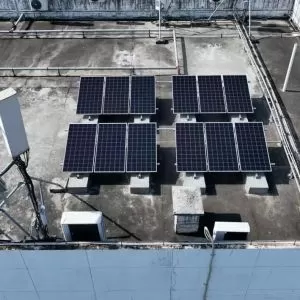
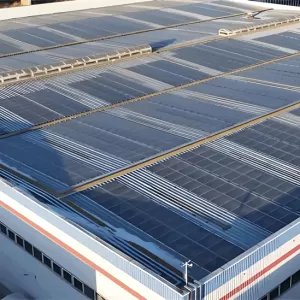
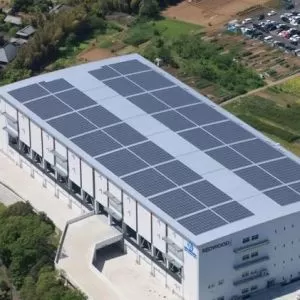
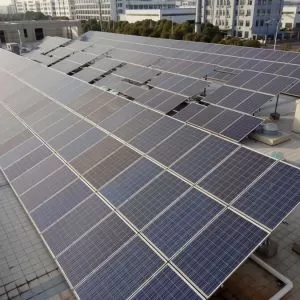
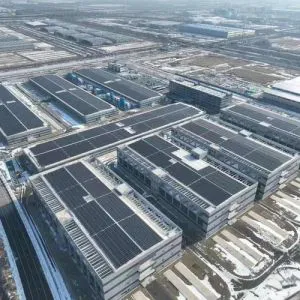
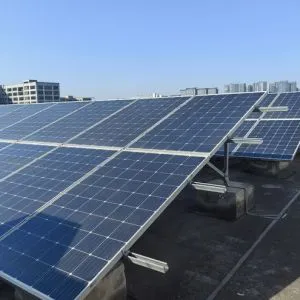

One step to find us,we will respond within 24 hours.
More Contact Details
008613738639386
[email protected]